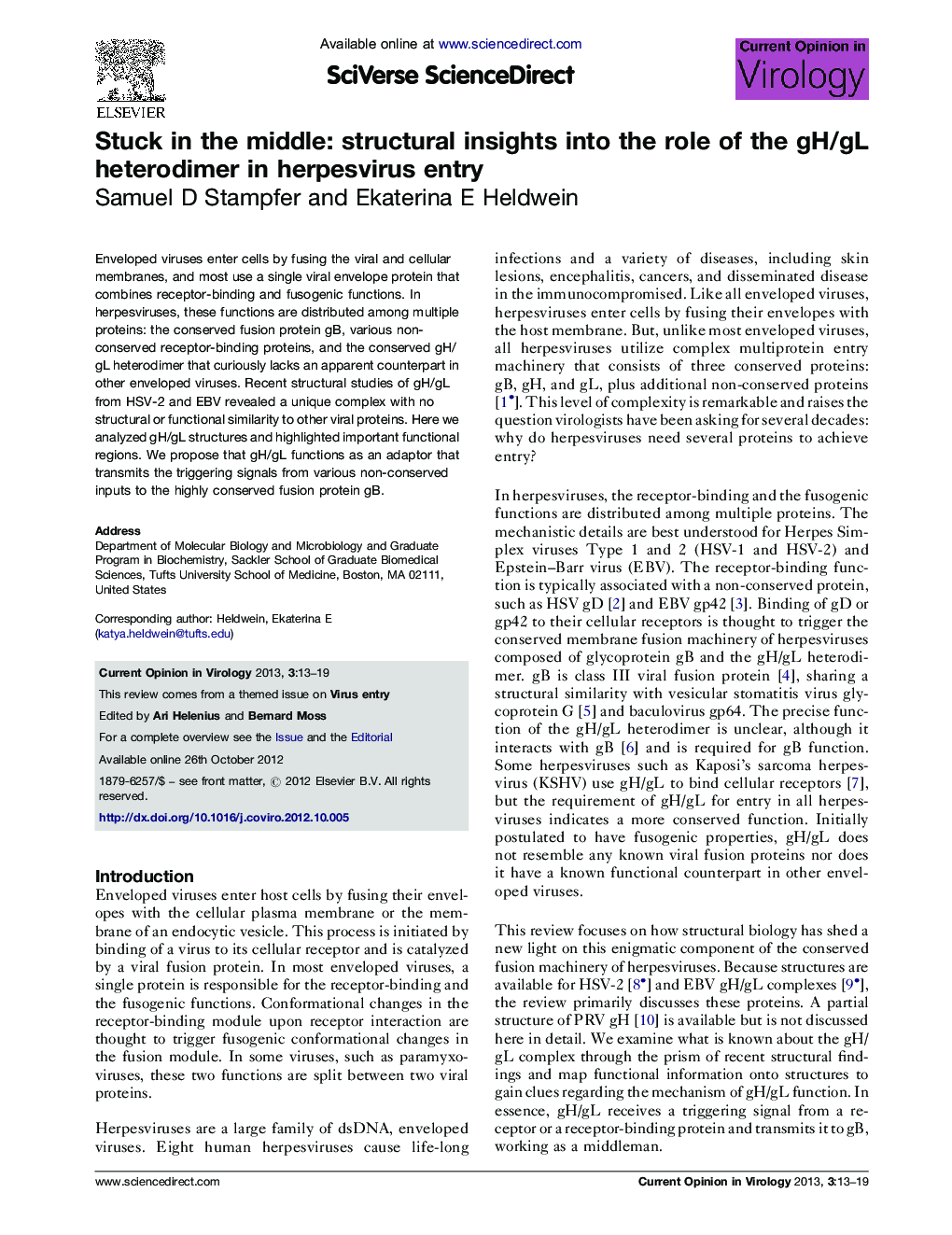| Article ID | Journal | Published Year | Pages | File Type |
|---|---|---|---|---|
| 2473518 | Current Opinion in Virology | 2013 | 7 Pages |
Enveloped viruses enter cells by fusing the viral and cellular membranes, and most use a single viral envelope protein that combines receptor-binding and fusogenic functions. In herpesviruses, these functions are distributed among multiple proteins: the conserved fusion protein gB, various non-conserved receptor-binding proteins, and the conserved gH/gL heterodimer that curiously lacks an apparent counterpart in other enveloped viruses. Recent structural studies of gH/gL from HSV-2 and EBV revealed a unique complex with no structural or functional similarity to other viral proteins. Here we analyzed gH/gL structures and highlighted important functional regions. We propose that gH/gL functions as an adaptor that transmits the triggering signals from various non-conserved inputs to the highly conserved fusion protein gB.
Graphical abstractFigure optionsDownload full-size imageDownload as PowerPoint slideHighlights► Herpesviruses require multiple viral proteins to achieve cell entry. ► Receptor-binding and fusogenic functions are distributed among several proteins. ► Conserved gH/gL lacks apparent functional analogs in other viruses. ► HSV-2 and EBV gH/gL structures reveal structural plasticity and important functional regions. ► gH/gL is an adaptor transmitting different triggering signals to conserved fusion protein gB.
